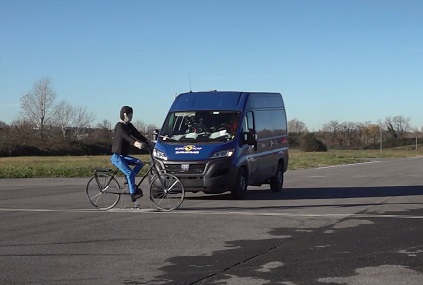Euro NCAP has been carrying out more stringent Commercial Van testing for 2023 and now plans to perform safety testing for rating HGVs
The Euro NCAP “New Car Assessment Programme” organisation has been testing and rating passenger cars for a long time to provide insight into their crash resistance and their passive and active safety performance. The organisations road-map to improved safety specifies more stringent requirements and testing each year and has long voiced its intention to bring light goods vehicles into the scope of its operations.
Hence in 2021, Euro NCAP launched the “Commercial Van Safety Rating” to improve safety information for fleet managers and provide a safer experience for van drivers and other road users. Good improvements in system performance and availability were reported when Euro NCAP revisited the van results one year later.
Now, the organisation is taking the next step and tightening up the criteria for these ratings. So far, eighteen vans have been tested under these new conditions. Illustrating the continuous improvements expected by the test house, one model, the Fiat Ducato, dropped in the ratings since last year under the tougher protocol of 2023. Last year, the Nissan Interstar had a “Not Recommended” rating based on its lack of crash avoidance systems and retains the same position this year.
According to Euro NCAP’s road-map, by 2026 vans will be expected to have the same ADAS (Advanced Driver Assist Systems) requirements as passenger cars, and the van rating will from then on only consider standard fitment across all European markets.
ADAS for vans
Despite the fact that commercial vans do not have a higher crash rate than other vehicles, those crashes that involve vans do tend to be more severe for their opponent vehicles and vulnerable road users. Euro NCAP has seen that ADAS technology can help effectively prevent or mitigate the consequences of these crashes. However, commercial vans are often not adequately equipped with state-of-the-art technology. Euro NCAP’s new criteria for Commercial Van Ratings takes ADAS to a higher level with greater emphasis on vulnerable road users including pedestrian safety, with focus on night-time scenarios, and cyclists as well as the introduction of one new van-to-car crash scenario.
Safety technologies and innovative solutions are developing at a fast pace and, according to Michiel van Ratingen, Secretary-General Euro NCAP, his organisation must develop its criteria to ensure that manufacturers maintain the impetus to innovate and make available the latest safety technologies in all vehicles on European roads.
“Just because vans are used for commercial purposes, does not mean they should be any less safe than passenger cars. Under Euro NCAP’s plans by 2026, vans will be expected to meet the same ADAS requirements as passenger cars,” he says.
HGV safety testing
Vans and trucks are likely to become more important on Europe’s roads with projected increases in freight transport. With this increase comes the negative effect on road safety and the environment. Euro NCAP strongly believes that it must also expand its safety testing to larger and heavier trucks (HGVs). Later in 2023, the organisation will launch a new rating scheme that will keep drivers safe and create a market for safe and clean technology that will allow manufacturers to innovate and advance their safety offering firmly grounded in Euro NCAP principles.
“Over the last year Euro NCAP has been examining safety and possible solutions within the heavy goods vehicle category. I believe that this must be Euro NCAP’s next milestone to ensure that countries across Europe achieve their ‘Vision Zero’ target and end traffic-related fatalities,” concludes van Ratingen.
- UK manufacturing steps up to COVID-19 crisis - April 2, 2020
- Clustering Innovation - March 12, 2020
- A Global Monitor - March 6, 2020

